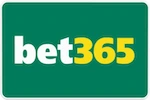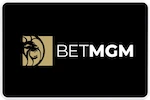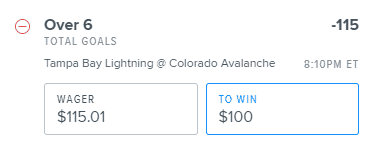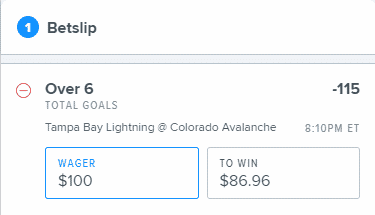When you bet at online sportsbooks, you select the game that you want and then have two empty boxes. One is the Risk Amount and one is the Win Amount. In a general sense, the box that you fill in is the determining factor in whether you are a bet to win or bet to risk player.
Every bettor has a different unit size based on his or her bankroll. Some bettors may bet $10 or $20 on a game and there are other bettors out there that move large sums of money like $10,000 or $20,000 per game. It doesn’t matter what size your traditional bet amount is because you’re going to be left with this same decision whether a dime means $10 for you or $10,000 for you.






Bet To Win – Your Wager “Risk”
Betting to win is the way that most people do it. The standard vigorish, or “juice”, on a bet is -110. In simplified terms, this is the “house edge” with betting. Using the bet to win concept, you would bet your unit size plus 10% in order to win one unit. If you are a $100 bettor, that would mean betting $110 to win $100. If you are a $20 bettor, that would mean betting $22 to win $20.

The -110 is what creates the hold for the sportsbook. If 100 people bet on one side at even money and 100 people bet on the other side at even money, the sportsbooks would not make any money and businesses don’t stay open if they aren’t making any money.
Let’s say 100 people bet $11 to win $10 on one side of a game. Then 100 people bet $11 to win $10 on the other side of a game. The total amount of money wagered on both sides is $1,100, but the sportsbook is only going to pay back winnings of $1,000 because of the -110 vig. The sportsbooks would “hold” $100 in that scenario.
Most people will bet to win one unit simply because it makes it easier. We’re using round numbers to make the math simpler. A vig of -125 would simply mean betting $125 to win $100. You can do that with any level of vig out there.
When it comes to underdogs, if you are betting to win one unit, your bet size will reflect that as well. Let’s say you are a $10 bettor like the above example. If you bet on a +200 underdog, you are likely to bet $5 to win $10.
A lot of people fall into the “bet to win” category.
Betting to win is more of a hard-line stance. “My usual bet size is this, so I’m betting to win this because of the odds.”
Bet To Risk – Your “Wager” Amount
Betting to risk is different. Those that bet to risk will bet whatever amount they want and will not let the odds dictate what their bet size is going to be. In the above example, a $10 bettor will risk $11 on any bet at -110 if they want to bet to win. Those betting to risk are not going to be limited by what the odds dictate. They could bet $10 to win $9.09. They could bet $12.50 to win $11.36. They just bet either what they want or a number that they feel comfortable with and maybe don’t feel compelled to put the extra 10% out there on a bet to win a round number.

If you are a $10 bettor using a bet to win strategy, you have to bet $11 to win $10. If you are a $10 bettor using a bet to risk strategy, you would bet $10 to win $9.09. Sure, your win amount is 91 cents lower using a bet to risk strategy, but you also save a dollar if you lose.
It is primarily a matter of personal preference. For bookkeeping purposes, a lot of bettors will just adopt a bet to win strategy because of the nice, round numbers. At a brick-and-mortar sportsbook, that also means not carrying around change in your pocket or anything like that. Online, it really doesn’t matter either way because all of the math is done for you in your account anyway.
More advanced bettors that are able to calculate their perceived edge are not going to be bet to win players. They will bet to their edge and that would be a bet to risk strategy. They could have some bet amount that appears totally random like $12,765.34, but that is the right-sized bet based on what their model or betting system is spitting out.
Ultimately, bet to win vs. bet to risk is a matter of personal preference, but the bet to risk strategy is better for the player. If you are not calculating your perceived edge and betting that to an exact number with something like Kelly Criterion, this is the decision that you face. The vast majority of bettors are not calculating an exact edge. Therefore, they are finding a unit size that they feel comfortable with and are betting based on that.
Whether you bet $11 to win $10 or $10 to win $9.09 is entirely up to you, but the latter gives a bettor more control and more opportunity and thus that should be considered the preferred strategy.
Other Betting Topics
- Sports Betting Dictionary, Terminology & Bet Types Meanings
- 4 Tips For Making Successful Bets
- Basketball Betting Guide – How To Bet On Basketball
- What Are First Half and Halftime Bets?
- Parlay Sports Betting
- What Are Prop Bets – How To Bet Proposition Bets
- Pleaser Sports Betting
- Teaser Betting
- Over Under Betting
- Money Line Betting
- Point Spread & Betting Lines Explained
- What is Against the Spread
- What Does -110 Mean In Sports Betting? Betting Odds Explained
- What is Reduced Juice Betting?
- How To Read Rotation Numbers & Sports Betting Odds
- What Is a Progressive Parlay? How To Bet Progressive Parlays
- 3-Way Money Line

